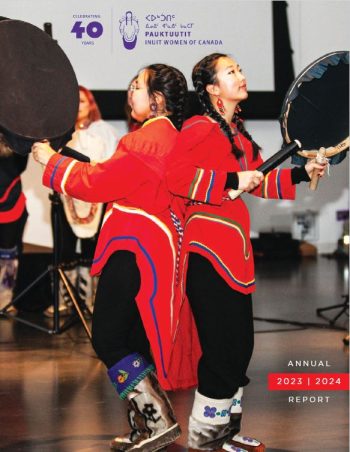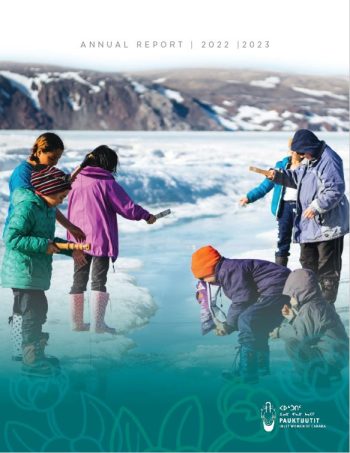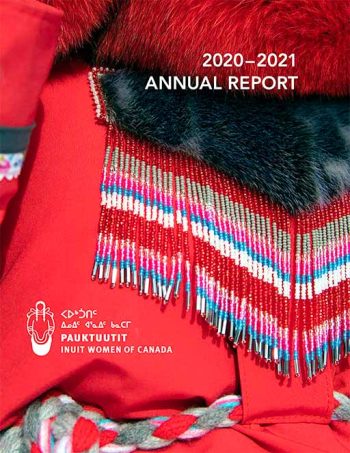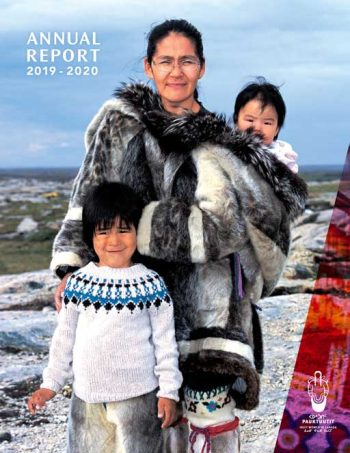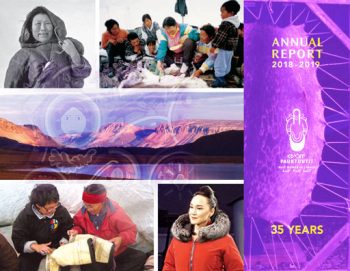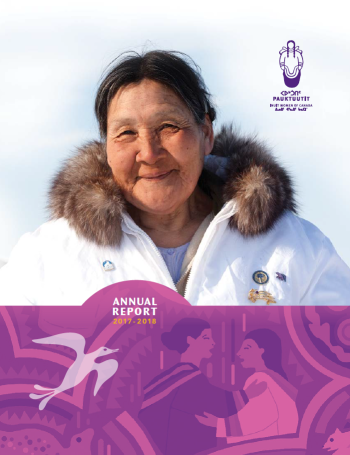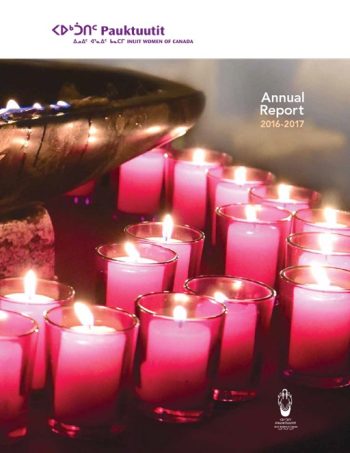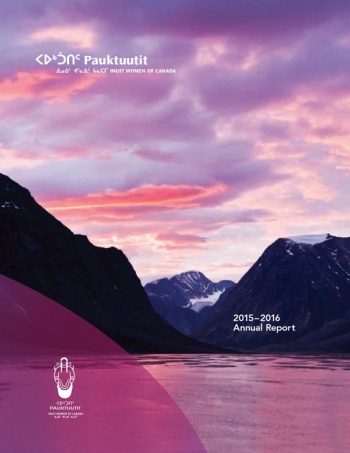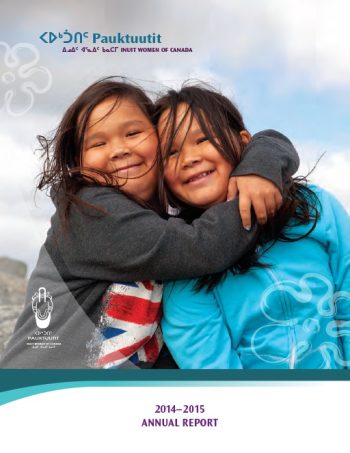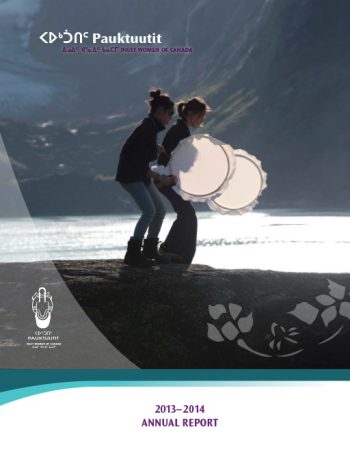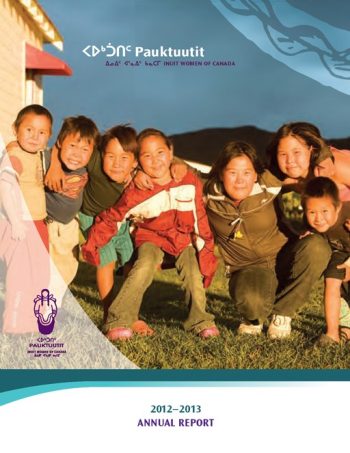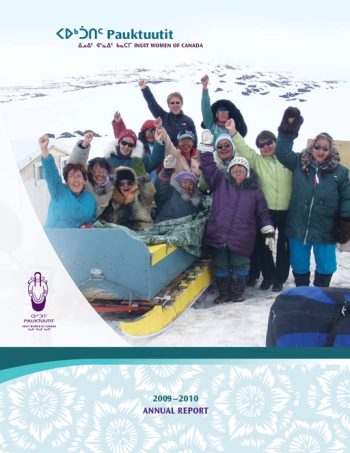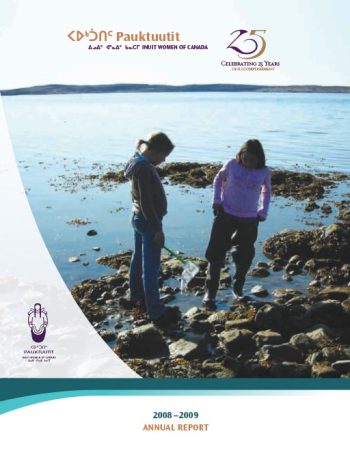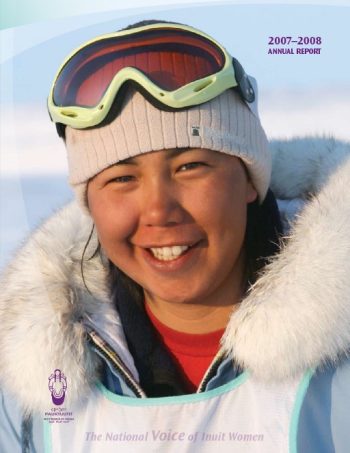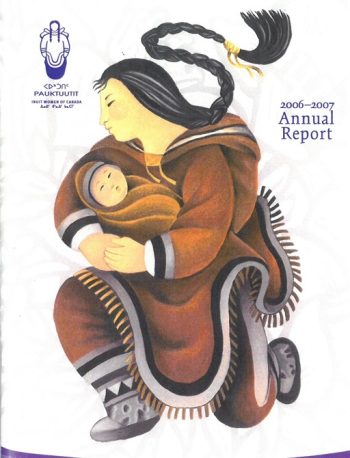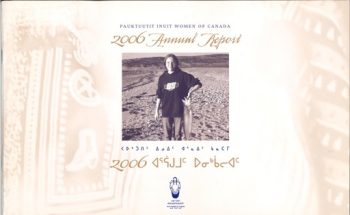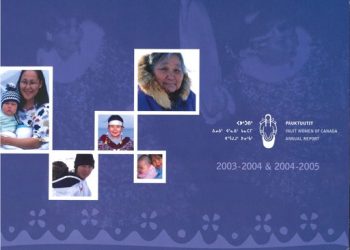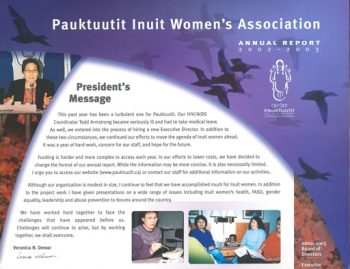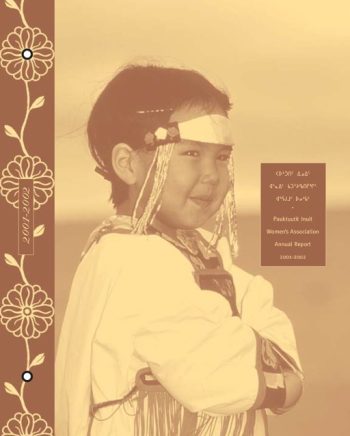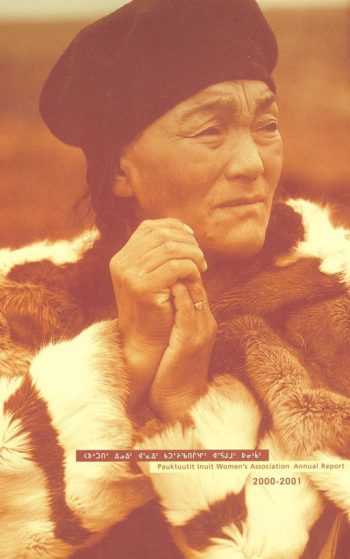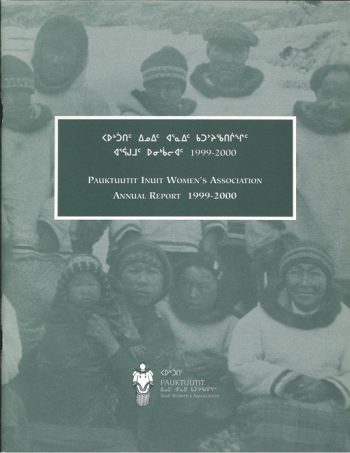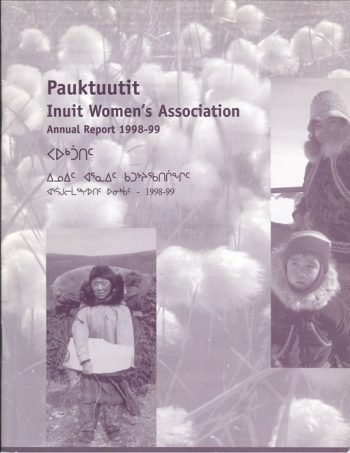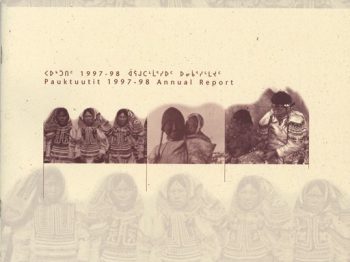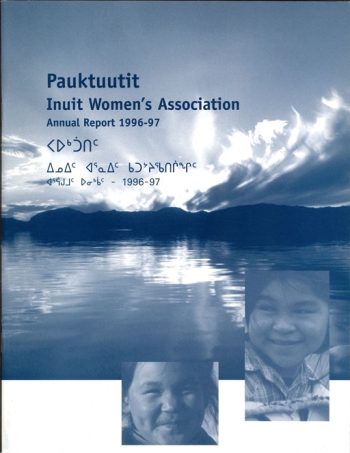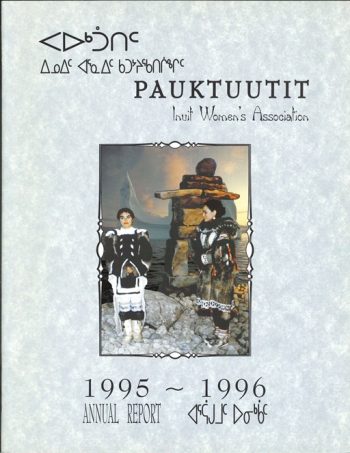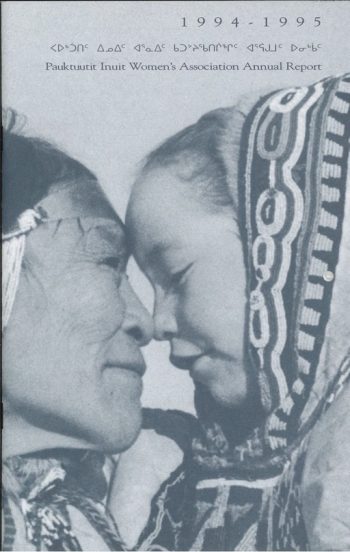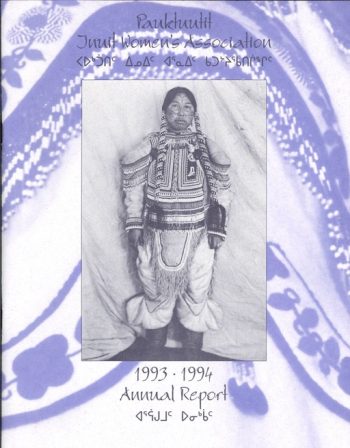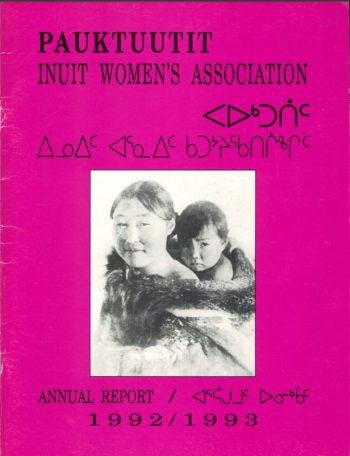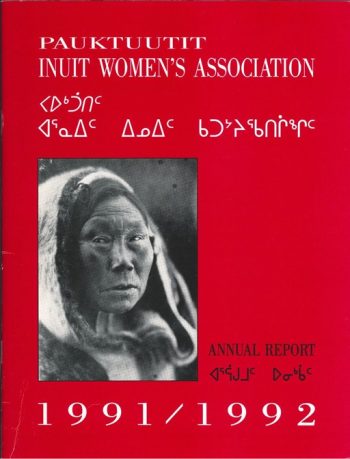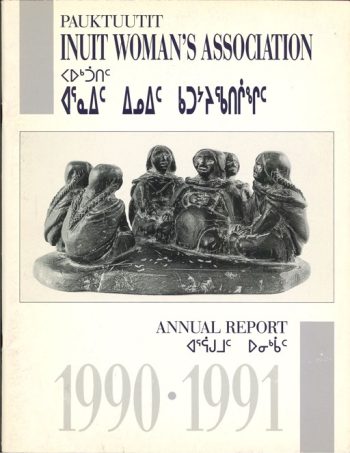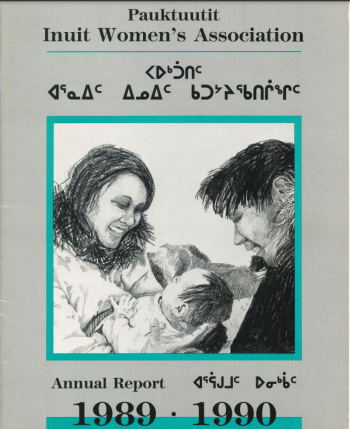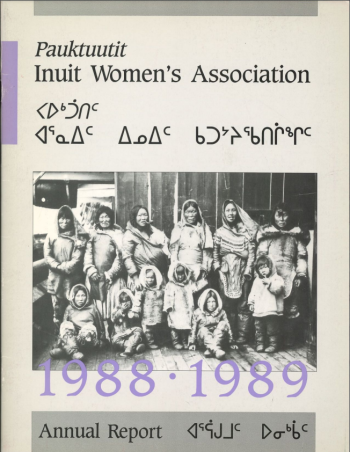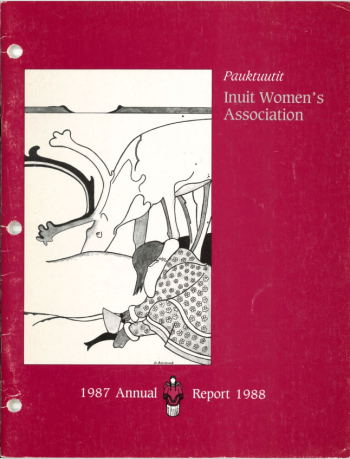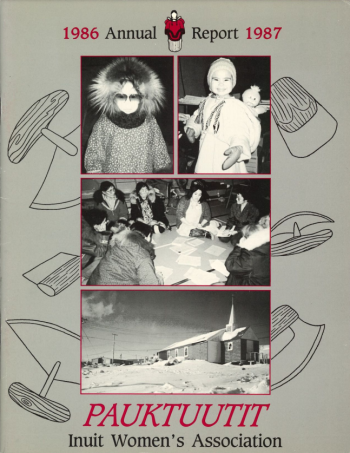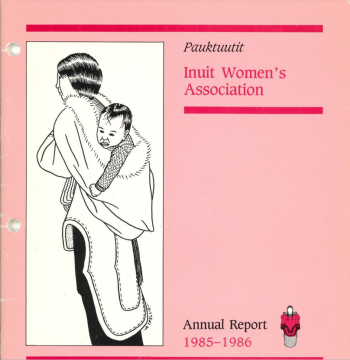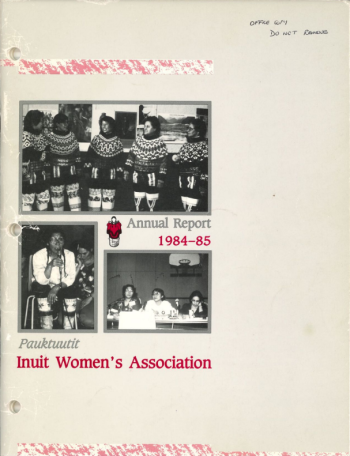Publications
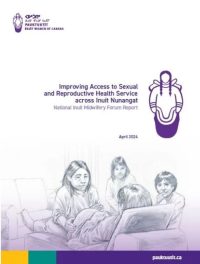
Improving Access to Sexual and Reproductive Health Service across Inuit Nunangat
The Pauktuutit Inuit Women of Canada has prioritized the expansion of Inuit midwifery services for Inuit women and gender-diverse Inuit. To initiate systemic change, Pauktuutit convened a stakeholder gathering in partnership with the National Council of Indigenous Midwives, supported by funding from Indigenous Services Canada. We hosted a virtual National Inuit Midwifery Forum on the afternoons of March 28-30, 2023, to raise awareness about the challenges faced by Inuit, the role of Inuit midwives, the importance of culturally informed midwifery services, and the need for a rights-based framework to support the return and integration of Inuit midwifery.
This report summarizes the proceedings and outcomes of the National Inuit Midwifery Forum. It is part of ongoing efforts to develop a National Inuit Midwifery Framework, based on the belief that sexual and reproductive health are inherent human rights, and that Inuit are entitled to high-quality, evidence-informed, and culturally safe care.
Year Published 2024
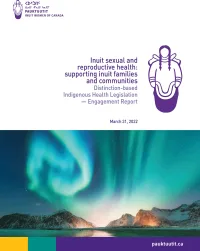
Inuit Sexual and Reproductive Health: Supporting Inuit Families and Communities.
From September 2021 to March 2022, Pauktuutit spoke with Inuit in Inuit Nunangat and in urban centers across Canada to hear what they would like to see the Federal Government include in Distinctions-based Indigenous Health Legislation.
We heard from health care workers, administrators, nurses, researchers, elders, and mothers about their experiences in the Canadian health care system. They told powerful stories that call for dramatic change to the current approach to Inuit sexual and reproductive health care.
This report presents our recommendations toward building an equitable foundation for Inuit sexual and reproductive health in Canada.
Year Published:2022
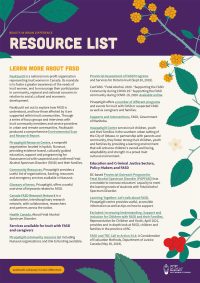
Resource List
Here you can find a list of resources and services that can help you learn about FASD, seek support for yourself or a loved one, and how you can make a difference for people with FASD. Have we missed an organization or resource? Let us know at fasdcop@pauktuutit.ca
https://pauktuutit.ca/wp-content/uploads/Pauk-ResourceList-V1.0-22-1.pdf
Year Published: 2022
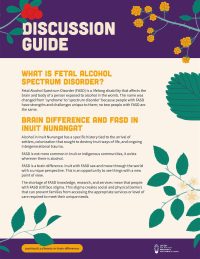
2-page Discussion Guide
Fetal Alcohol Spectrum Disorder (FASD) is a lifelong disability that affects the brain and body of a person exposed to alcohol in the womb. The name was changed from ‘syndrome’ to ‘spectrum disorder’ because people with FASD have strengths and challenges unique to them; no two people with FASD are the same.
https://pauktuutit.ca/wp-content/uploads/Pauk-DiscussionGuide-TWOPAGE-FINAL.pdf
Year Published: 2022
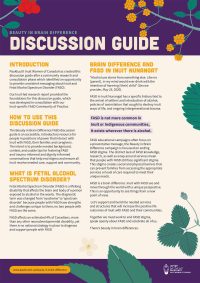
Beauty in Brain Difference Discussion Guide
The Beauty in Brain Difference FASD discussion guide is an accessible, introductory resource for people in positions of power that interact with Inuit with FASD, their families and caregivers. The intent is to provide needed background, context, and usable tips for fostering FASD and trauma-informed and dignity-informed conversations that help end stigma and ensure all
Inuit receive needed care, support and community.
Year Published: 2022
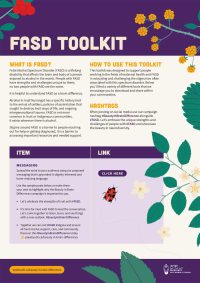
FASD Toolkit
This toolkit was designed to support people working in the fields of maternal health and FASD in educating and challenging the stigma too often associated with this spectrum disorder. Below you’ll find a variety of different tools that we encourage you to download and share within your communities.
This work is by and for Inuit. Our Inuit-led research report provided the foundations upon which we built this campaign. We developed this toolkit with the help of our Inuit-specific FASD Community of Practice so that you can join us in reducing the stigma associated with FASD among Inuit.
https://pauktuutit.ca/wp-content/uploads/Pauktuutit-DigitalToolkit-FINAL-1.pdf
Year Published: 2022
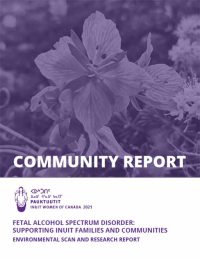
Community Report: FASD – Supporting Inuit Families and Communities
We would like to extend our sincere thanks and appreciation to the many people who contributed to this report.
Primarily, we would like to thank the community members, service providers, and key informants who took the time to share their knowledge and stories with us. This work could not have been completed without their participation.
This report was a collaborative effort of a research team that worked to design, implement and complete the work. This includes core team members from Pauktuutit and Firelight Research Inc. who worked together to design the research methods, travelled to Nunavik and the Inuvialuit Settlement Region to facilitate and carry out focus groups and interviews, conducted virtual interviews, and provided analysis and writing support. Crystal Martin-Lapenskie from Okpik Consulting aided in the virtual interviews and engagement and provided critical report support at a time when the pandemic caused the report to shift from an in-person to virtual setting.
Lastly, we would like to especially acknowledge all of the Inuit families across Inuit Nunangat and Canada who are impacted by FASD, those with suspected or confirmed FASD, those who are caregivers, and those providing essential services to others affected by FASD.
Year Published: 2021
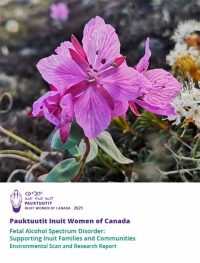
Environmental Scan and Research Report: FASD – Supporting Inuit Families and Communities
We would like to extend our sincere thanks and appreciation to the many people who contributed to this report.
Primarily, we would like to thank the community members, service providers, and key informants who took the time to share their knowledge and stories with us. This work could not have been completed without their participation.
This report was a collaborative effort of a research team that worked to design, implement and complete the work. This includes core team members from Pauktuutit and Firelight Research Inc. who worked together to design the research methods, travelled to Nunavik and the Inuvialuit Settlement Region to facilitate and carry out focus groups and interviews, conducted virtual interviews, and provided analysis and writing support. Crystal Martin-Lapenskie from Okpik Consulting aided in the virtual interviews and engagement and provided critical report support at a time when the pandemic caused the report to shift from an in-person to virtual setting.
Lastly, we would like to especially acknowledge all of the Inuit families across Inuit Nunangat and Canada who are impacted by FASD, those with suspected or confirmed FASD, those who are caregivers, and those providing essential services to others affected by FASD.
Year Published: 2021
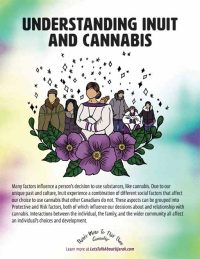
Understanding Inuit and Cannabis
Many factors influence Inuit decisions to use substances like cannabis, including our past experiences, current realities, and our culture. Learn more about these factors and how you can help open discussions around cannabis with your family or community.
https://pauktuutit.ca/wp-content/uploads/Inuit-and-CannabisEN.pdf
Year Published September 2021
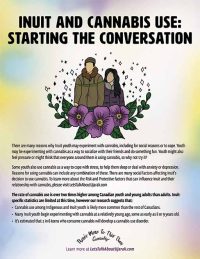
Inuit and Cannabis Use: Starting the conversation
Many factors influence Inuit decisions to use substances like cannabis, including our past experiences, current realities, and our culture. Learn more about these factors and how you can help open discussions around cannabis with your family or community.
https://pauktuutit.ca/wp-content/uploads/discussion-guideEN.pdf
Year Published September 2021
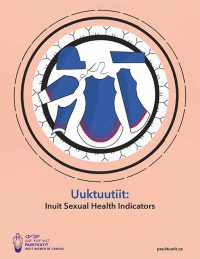
Uuktuutiit: Inuit Sexual Health Indicators
Uuktuutiit: Inuit Sexual Health Indicators, responds to the 2017 Tavva: Inuit Sexual Health Strategy objective for Inuit-specific surveillance of sexual health and is directed towards future research orientations. Uuktuutit touches on efforts described in the Ikajurniq: Cascade of Care to measure initiatives related to monitoring STBBIs but goes beyond by including other key aspects that effect sexual health and wellness such as, reducing sexual violence, providing more mental health services in communities and supporting gender and sexual diversity. While 15 indicators were selected by the National Inuit Sexual Health Network members to as the foci of Uuktuutit, it is important to note that there is not one single approach to measuring sexual health and that the selection and application of indicators must be regionally and community specific.
https://pauktuutit.ca/wp-content/uploads/Final-English-Uuktuutiit-aug2021-electronic-proof.pdf
https://pauktuutit.ca/wp-content/uploads/Uuktuutiit-French-electronic-apr2022.pdf
https://pauktuutit.ca/wp-content/uploads/Uuktuutiit-Inuinnaqtun-electronic-apr2022.pdf
https://pauktuutit.ca/wp-content/uploads/Uuktuutiit-Inuktitut-north-Baffin-electronic-mar2022.pdf
https://pauktuutit.ca/wp-content/uploads/Uuktuutiit-Inuktitut-south-baffin-electronic-sept2021.pdf
https://pauktuutit.ca/wp-content/uploads/Uuktuutiit-Inuvialuktun-electronic-mar2022.pdf
https://pauktuutit.ca/wp-content/uploads/Uuktuutiit-Labrador-Inuttut-mar2022-electronic.pdf
https://pauktuutit.ca/wp-content/uploads/Uuktuutiit-Nunavik-electronic-apr2022.pdf
Year Published: 2021
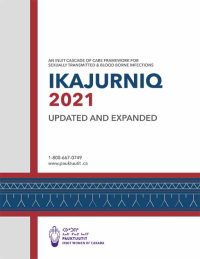
Ikajurniq 2021
The first version of Ikajurniq was published in 2018. It was conceptualized as a tool to inform Inuit of the various steps involved in sexual health education, testing, diagnosis and treatment, as well as guide healthcare services providers in culturally relevant and regionally specific approaches that provide safe and equitable delivery of care for Inuit. After feedback and engagement consultations with health care providers across Inuit Nunangat in 2019-2020, Ikajurniq has been updated and its framework expanded – Ikajurniq 2021 includes more information on the prevention, testing and treatment of infections that are spread through sexual contact and through blood as well as a new updated graphic depicting an Inuit-specific Cascade of Care.
https://pauktuutit.ca/wp-content/uploads/IKAJURNIQ-sept2021-electronic-final.pdf
Year Published: 2021
